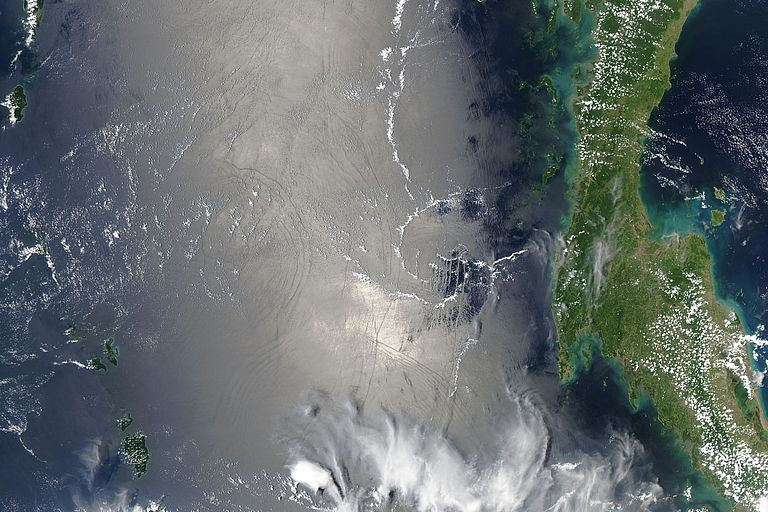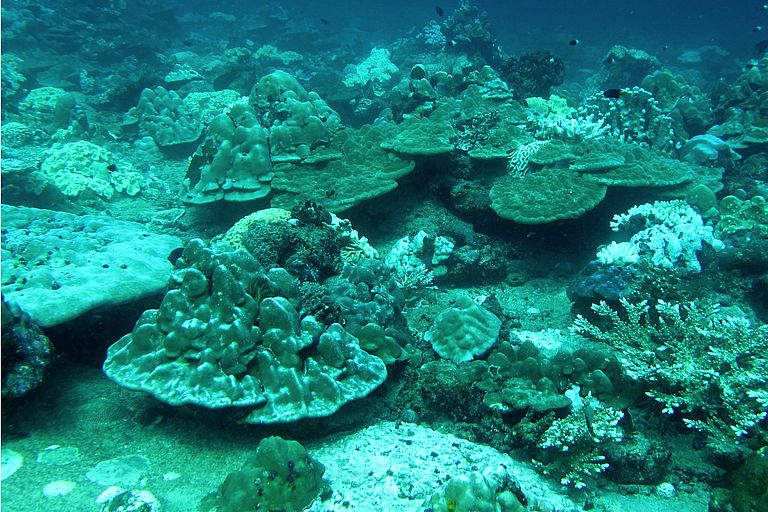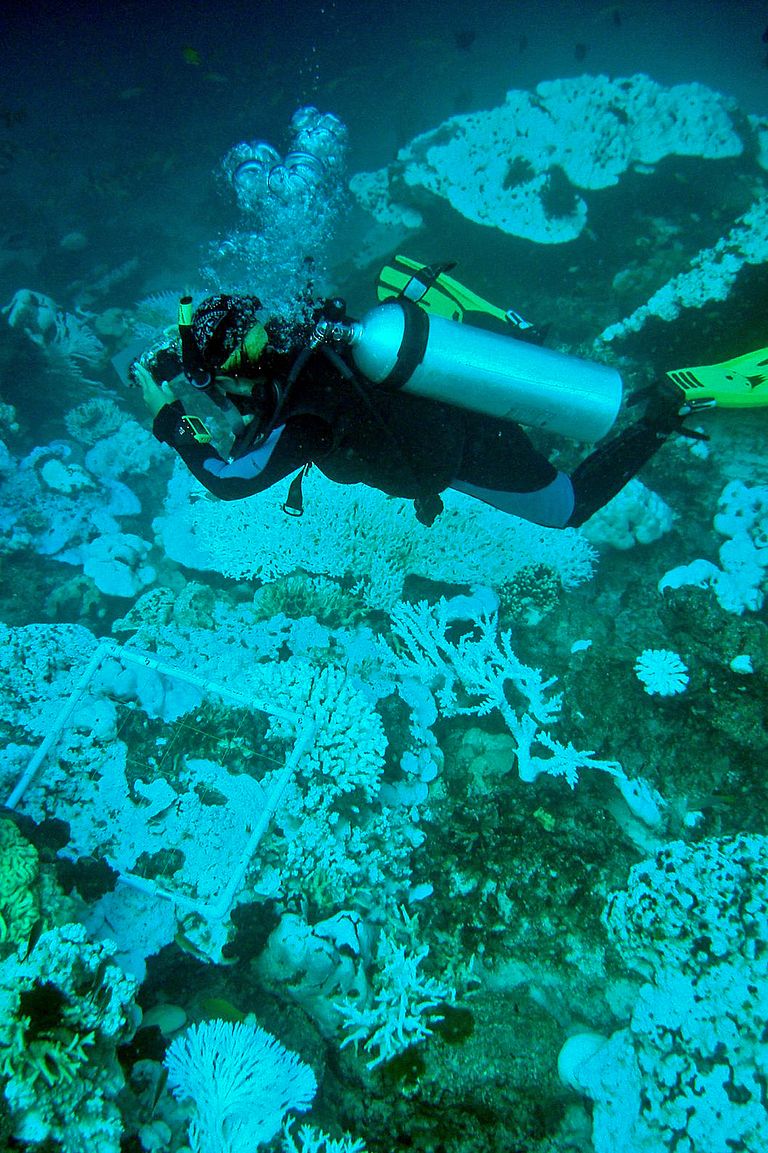Cool deep-water protects coral reefs against heat stress
Internal waves mitigate the increase in water temperatures in the Andaman Sea
1991, 1995, 2003, 2010 - again and again, increased water temperatures lead to bleaching with fatal consequences for stony corals in the Andaman Sea. These animals are highly susceptible to changes in water temperatures. Even a small temperature rise damages the symbiotic algae living in a cell layer of the corals causing their expulsion by the coral host. The corals, which depend on the photosynthetic energy of their symbionts, are hardly able to survive without them. The rise in ocean temperatures and coral bleaching are considered as the greatest threats to coral reef ecosystems worldwide. Therefore, natural retreat areas where corals experience less stress or have become more resistant through physiological adaptations are investigated.
In 2010, the most massive coral bleaching so far has hit the Andaman Sea. "The consequences differed a lot depending on local situations," emphasizes Dr. Marlene Wall, biologist at GEOMAR Helmholtz Centre for Ocean Research Kiel and first author of the study published in the January issue of the "Proceedings of the Royal Society B". In their study, the scientists analysed how the location of the reefs determined the extent of the damage: Locations that faced westwards benefitted from so-called large-amplitude internal waves (LAIW). In contrast to surface waves, LAIW travel along density gradients that separate the cold deep water from the warmer upper layer. Once they reach the continental shelf, internal waves may break and transport water from the deep to the shallow coral reefs. At reefs that were sheltered by islands, the heat stress was 40 to 80 per cent higher - with dramatic consequences.
In the Andaman Sea, internal waves can temporarily cool down the water temperature around coral reefs by up to ten degrees Celsius. "These changes are a mixed blessing. Under normal conditions, lower temperatures have negative effects on the corals. But during heat stress, they offer unexpected cooling and help the corals to survive," says project leader Prof. Claudio Richter from the Alfred Wegener Institute for Polar and Marine Research. He examines the phenomenon of internal waves in the tropics and the polar regions.
In the tropical Andaman See, internal waves are most pronounced during the dry northeast monsoon from January to March. In July and August, the monsoon blows from the southwest. It brings rain, mixes the ocean thoroughly and drives water towards the coasts - the coral reefs of the islands’ west flanks are then exposed to greater sedimentation. "The reefs of the western sides are less developed, because LAIW also temporarily cause ocean acidification and reduce the oxygen availability in the reefs," says Dr. Wall. Nevertheless, the coral communities on the west shores are similarly rich in coral species, which proves that the corals living there have adapted physiologically to these recurring problems. "In regions where internal waves come about, they could contribute to the conservation of coral reefs," the authors stress in their study.As part of their investigation, the biologists revealed differences between the data of the satellite monitoring of the US-American National Oceanic and Atmospheric Administration (NOAA) and in-situ work: Only on-site measurements reflected the potential of internal waves. "Accurate knowledge of local conditions is therefore important for the establishment and monitoring of protected areas for corals," says Dr. Wall.
Original publication:
Wall M., Putchim L., Schmidt G.M., Jantzen C., Khokiattiwong S., Richter C. (2015), Large-amplitude internal waves benefit corals during thermal stress. Proc. R. Soc. B 282, doi: 10.1098/rspb.2014.0650
Links:
Alfred Wegener Institute, Helmholtz Centre for Polar and Marine Research (AWI)
BIOACID (Biological Impacts of Ocean Acidification)
CALMARO (Calcification by Marine Organisms)
Contact:
Maike Nicolai (Communication & Media), Phone: +49 431/600-2807, mnicolai(at)geomar.de
Prof. Dr. Claudio Richter (Alfred-Wegener-Institut)
Phone: +49 471 4831-1304,
Claudio.Richter(at)awi.de





